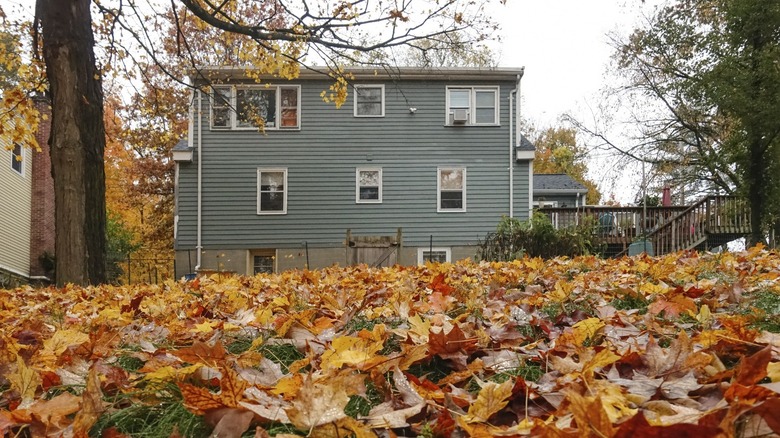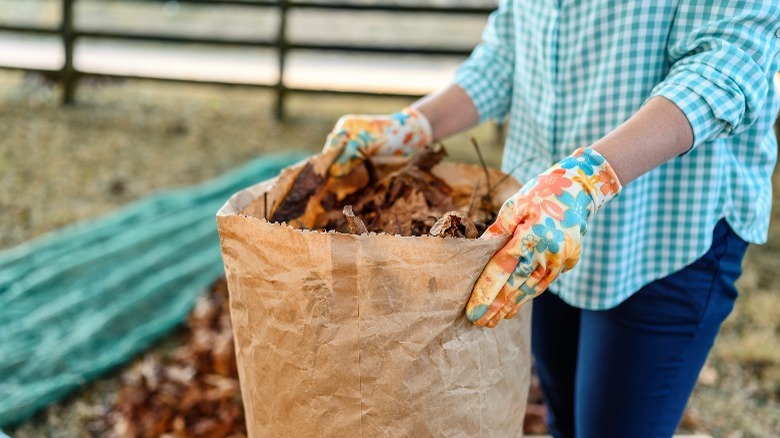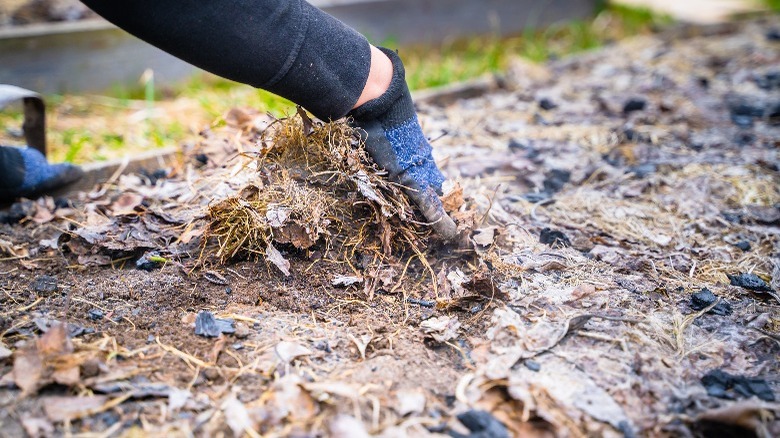Why You Should Save Your Leaves Now For Your Spring Garden
One fall morning, you notice that all the trees have bright leaves. Before you know it, the autumn winds blow down what seems like tons of leaves in your yard. Many homeowners become overwhelmed and quickly rake up their leaves for local recycling programs. Others let the leaves stay on their lawn and break down naturally. If you feel like the "leave the leaves" movement is not for everyone, or you don't live somewhere that offers municipal leaf pickup, you might think you're out of options.
Thankfully, you can tuck away fallen leaves for next year's spring garden. Saving your leaves now in autumn for next spring is a great option if you don't want to leave them on your lawn. They will provide your garden beds with much-needed nutrients in the spring, and can easily be stored in bags throughout the colder months. Also, collecting and storing leaves doesn't take a lot of time.
How to save leaves in the fall
To get ready to collect leaves in the fall for next spring, make sure to have a plan for long-term storage. You'll need some type of storage container, usually plastic or paper bags. Plastic bags are better for storing leaves to use for mulch in the spring because they help keep moisture out and won't deteriorate by the end of winter. Plan to bag leaves from your yard on a dry day, ideally before any hard frost or snow, so the leaves are not weighed down with moisture. Leaves break down slowly in bags unless you provide the right conditions for aerobic bag composting, which requires moisture and frequent turning.
Getting the leaves in your bags will be the most time-consuming part. Try a TikTok tarp hack to make raking up your leaves easier in the autumn, or grab your handy leaf scoops. Store your bagged leaves in a dry place like a shed, garage, or lean-to. However, you could also place them in an unused compost bin that has a lid, or a clean garbage bin. If you want to store more leaves in your chosen space, consider shredding the leaves prior to bagging them up. Shredded leaves take up less space altogether. Plus, shredded leaves make the best mulch because they will not trap moisture and air, or create impenetrable sheets of material.
Ready-to-go mulch for your garden beds
Leaves are one of the best eco-friendly mulch options you can choose for your flower and garden beds. If you save them in the fall when they're abundant, you will have plenty of free mulch with rich organic material in the spring. While this organic material has benefits when left on your yard, too much can prevent proper growth and development of your grass. And they are not recommended as a winter mulch for plants like strawberries because they turn into large, heavy mats. But leaves make a great mulch that is ready to go when warmer air returns and it's time for springtime gardening.
Once you've stored your leaves in the autumn, you can use them for a variety of purposes. As a mulch, apply about 3 to 4 inches around trees or shrubs. Leaf mulch also works well in flower and vegetable garden beds, thanks to its high concentration of carbon. Leaves saved in the autumn can also be used to enrich your compost piles in springtime with much-needed dried organic material. It goes to show that there are many reasons you can be thankful for an abundance of fallen leaves.


